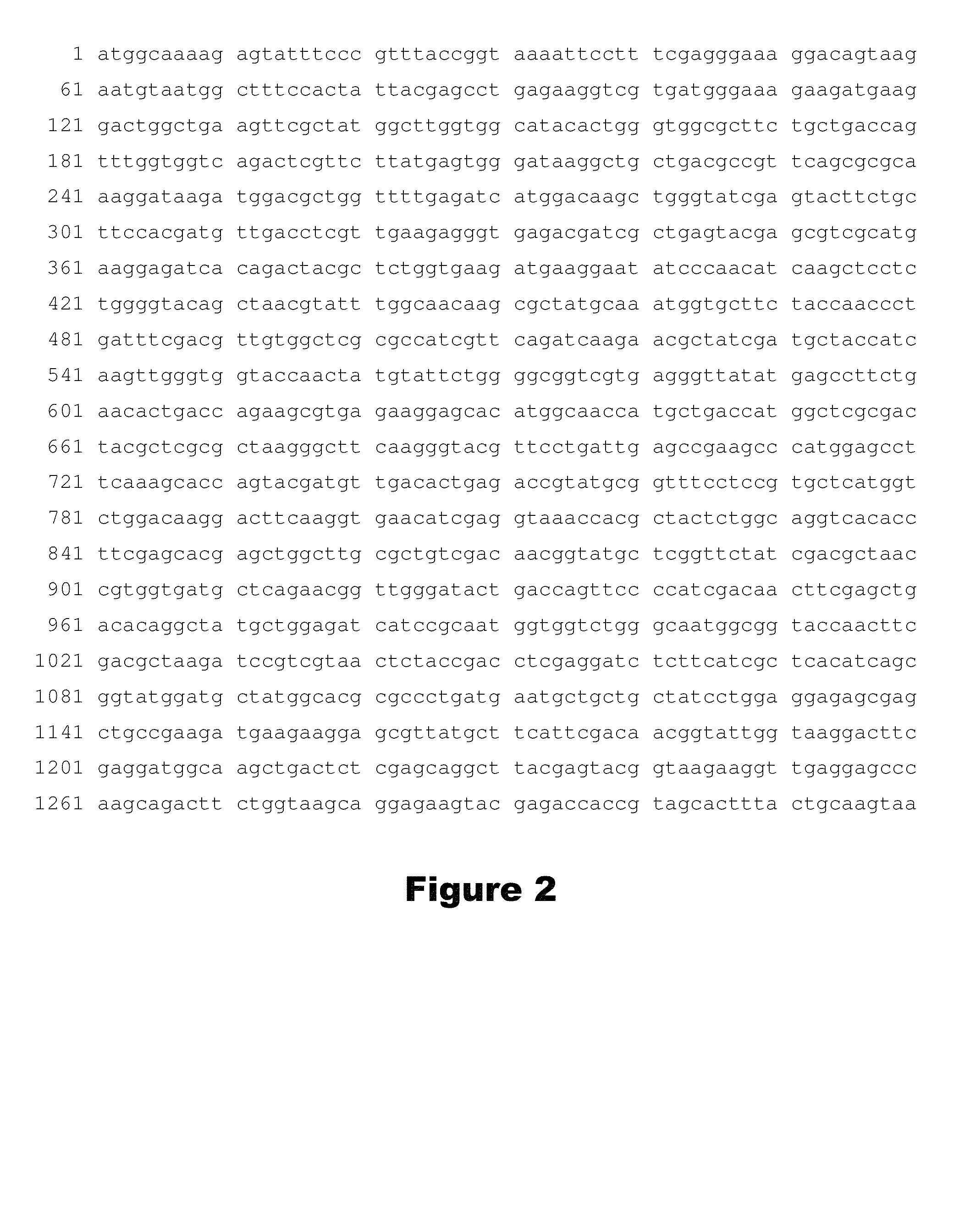Prevotella ruminicola xylose isomerase and co-expression with xylulokinase in yeast for xylose fermentation
a technology of xylose and isomerase, which is applied in the field of xylose isomerase enzyme and recombinant yeasts, can solve the problems of inability to grow anaerobically on xylose, low tolerance to acetic acid and other inhibitory chemicals common to biomass hydrolysates, and achieves increased activity and affinity for xylose. , the effect of increasing the activity and affinity
- Summary
- Abstract
- Description
- Claims
- Application Information
AI Technical Summary
Benefits of technology
Problems solved by technology
Method used
Image
Examples
example 1
Methods
Strains, Media, and General Methods
[0068]Escherichia coli strain NEB10b (New England Biolabs (NEB); Ipswich, Mass., USA) was used for routine maintenance and preparation of plasmids and were grown in LB medium (Sambrook and Russell, 2001, Molecular Cloning: A Laboratory Manual, 3rd edn., Cold Spring Harbor Laboratory Press, Cold Spring Harbor, N.Y.). DNA was transformed into yeast cells using a standard lithium acetate method (Gietz and Woods, 2002, Methods Enzymol., 350:87-96). Synthetic complete (SC) medium consisted of 6.7 g / l Difco yeast nitrogen base (YNB) (United States Biological; Marblehead, Mass., USA), and was supplemented with amino acids as necessary (Amberg et al., Methods in Yeast Genetics: A Cold Spring Harbor Laboratory Course Manual, 2005 edn., Cold Spring Harbor Laboratory Press, Cold Spring Harbor, N.Y.). YP medium (10 g / l yeast extract, 20 g / l bacto-peptone) was autoclaved without carbohydrate. Sterile glucose or xylose was added separately.
Cloning of the ...
PUM
| Property | Measurement | Unit |
|---|---|---|
| Affinity | aaaaa | aaaaa |
Abstract
Description
Claims
Application Information
 Login to View More
Login to View More - R&D
- Intellectual Property
- Life Sciences
- Materials
- Tech Scout
- Unparalleled Data Quality
- Higher Quality Content
- 60% Fewer Hallucinations
Browse by: Latest US Patents, China's latest patents, Technical Efficacy Thesaurus, Application Domain, Technology Topic, Popular Technical Reports.
© 2025 PatSnap. All rights reserved.Legal|Privacy policy|Modern Slavery Act Transparency Statement|Sitemap|About US| Contact US: help@patsnap.com



